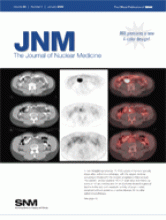TO THE EDITOR: There is presently no single clinical study trying to estimate the predictive value of renal cortical transit in hydronephrosis, using as endpoint the deterioration of renal function during a longitudinal follow-up of patients treated conservatively. Therefore, we read with much interest the experimental study of Schlotmann et al. (1). We are, however, somewhat reluctant to accept entirely the conclusion that “a delayed [cortical transit] should identify those kidneys whose function is at risk.”
Nineteen hydronephrotic kidneys were investigated before and after the creation of an experimental renal obstruction. Most had a striking decrease in split function on the first postoperative test, with a further drop at the second test, performed 2–4 wk after surgery. Such an evolution is not common in the clinical practice of antenatally discovered hydronephrosis. Split function, when measured some time after birth, can be either normal or abnormal, but in neither case is it common to observe such a huge deterioration of renal function during follow-up. The model of obstruction that the authors have created obviously corresponds to an extreme pattern of obstruction, close to subtotal or total obstruction.
When looking now to the detailed results of the study, one has to focus on only 12 of the 19 hydronephrotic kidneys, since 1 kidney was declamped between the first and second renograms, 2 others apparently underwent a second surgical intervention after the first renogram (to increase the degree of obstruction), and 4 were removed from the study because of technical problems. In only 9 of the remaining 12 kidneys was the first postoperative cortical transit predictive of the second postoperative split function. In 2 kidneys, cortical transit was delayed but split function remained stable. In 1 kidney, cortical transit was not delayed but split function deteriorated. Moreover, the same predictive value could be obtained in this study by replacing the first postoperative cortical transit by the first postoperative split function, or even by the first postoperative response to furosemide. Once again, this suggests that we are dealing here in most of the cases with a model of extreme obstruction. It is indeed well demonstrated in clinical practice that kidneys with low split function at entry are not necessarily those that will deteriorate if surgery is not undertaken (2). Similarly, a poor response to furosemide does not necessarily mean that the kidney is at risk (3).
Footnotes
-
COPYRIGHT © 2009 by the Society of Nuclear Medicine, Inc.







